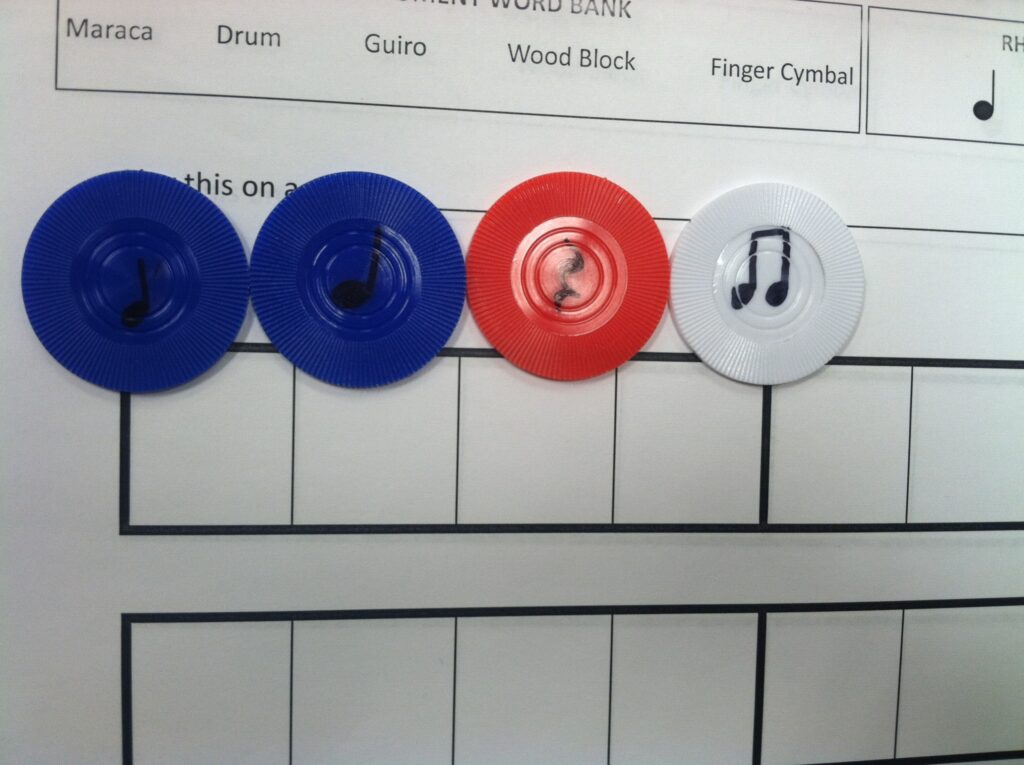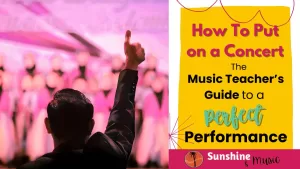
Rhythm poker chips are one of my favorite ways to get some quick composing going on in the classroom. I have bags of red (rest), white (paired eighth), and blue (quarter) poker chips. Usually I have each kid take two quarters, two eighth note pairs and one rest.
First, you can use the poker chips as a quick assessment tool. Say a four-beat rhythm and have students notate it out using the poker chips. The best thing is that the chips are color coded, so you should be able to glance around the room pretty quickly and see if students have the right answer or not. Who doesn’t like a quick assessment tool? Seriously, they are a music teacher’s best friend! Once you feel like students are using the rhythms well, you can move on to the composing side of things. Have students create their own four-beat rhythm. Have everyone read their pattern aloud at the same time. You can even have individual students read their patterns aloud if you have time. Kids love to share! Next, it’s time to pass out the worksheet.

I have students take the four-beat pattern they wrote, and copy each chip into the first four boxes of the worksheet. Then, they have to create a new four-beat pattern, and that goes in the next four squares, until the whole worksheet is filled out. Kids are able to do this pretty quickly. Using the poker chips as a manipulative really seems to help. For a finishing touch, I give students a choice of percussion instruments that their composition can be played on. Then I have them identify what group that instrument would be in: metal, wood, membrane or shaker. If you are a teacher in Florida like me, then just FYI that is a second grade benchmark (MU.2.C.1.3). Usually this is as far as I go with the activity, but here are a couple other things you can add on if you want to take the compositions to the next level. And they line up with some other benchmarks, so score! MU.2.O.1.3 – Identify the form of a simple piece of music. You can have two students partner up. Have them create simple form (AB, ABB, ABB, ABC) where A is one students song, B is the other and C is both at the same time. Make sure to have students practice so it’s not a train wreck. Have each group play their song and other groups have to guess the form. MU.2.S.1.2 – Create simple ostinati to accompany songs or poems. You can take one of the measures from a students song and use it as an ostinato. Try different ones and decide which you liked best. I’m sure there’s even more great stuff you could do with rhythm poker chips. Hopefully this post gives you some good ideas to start in your own classroom. Good luck!







